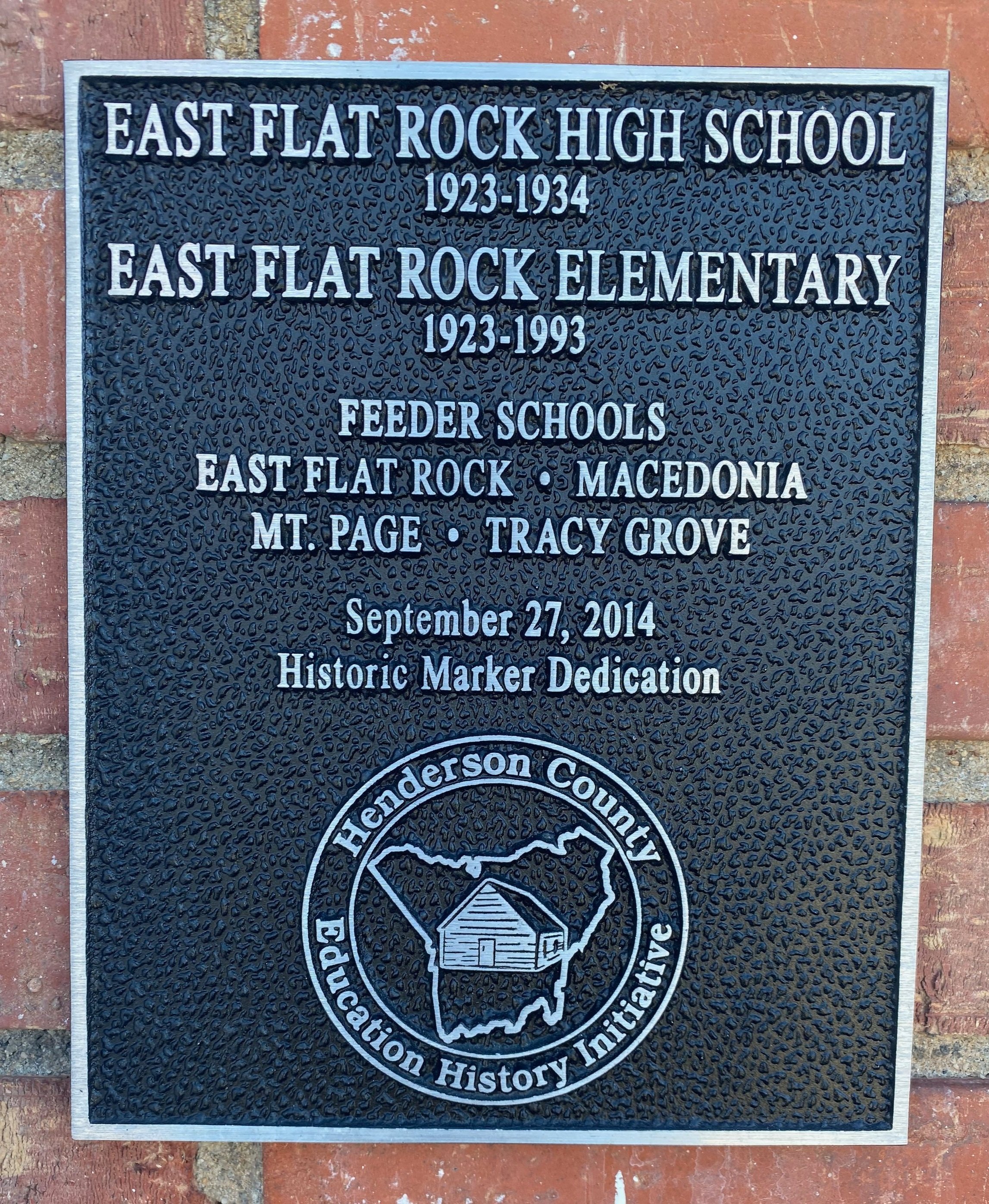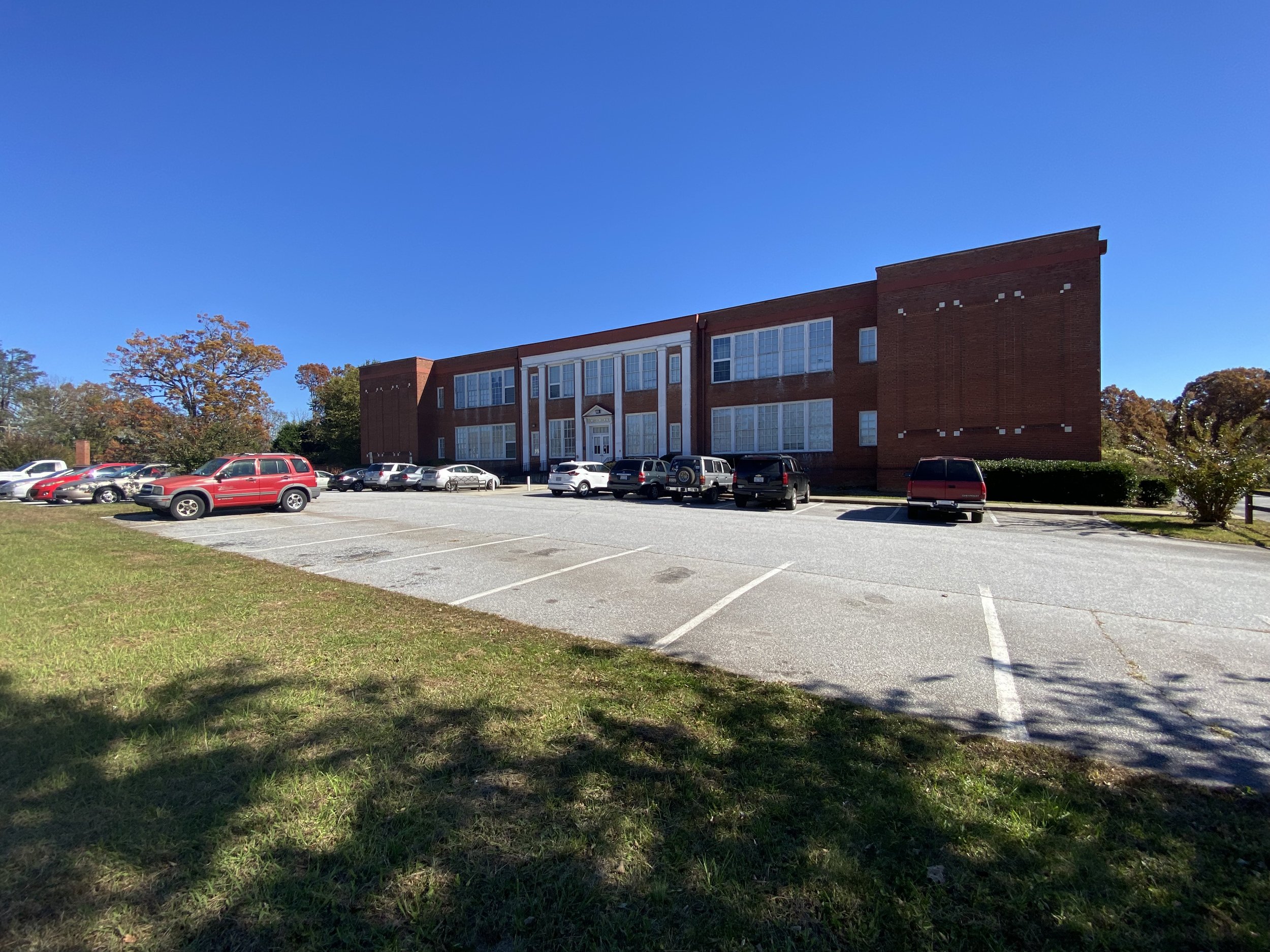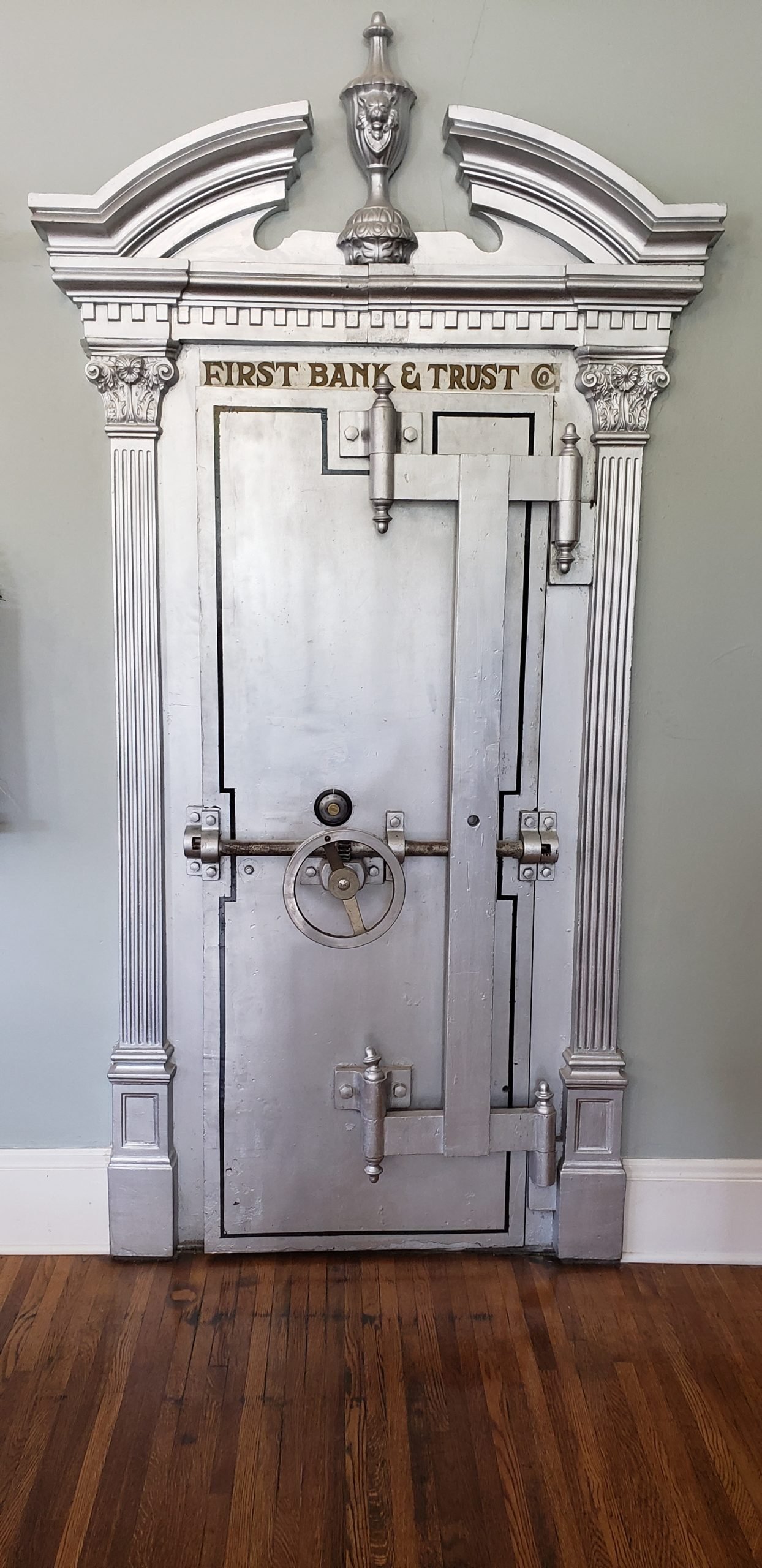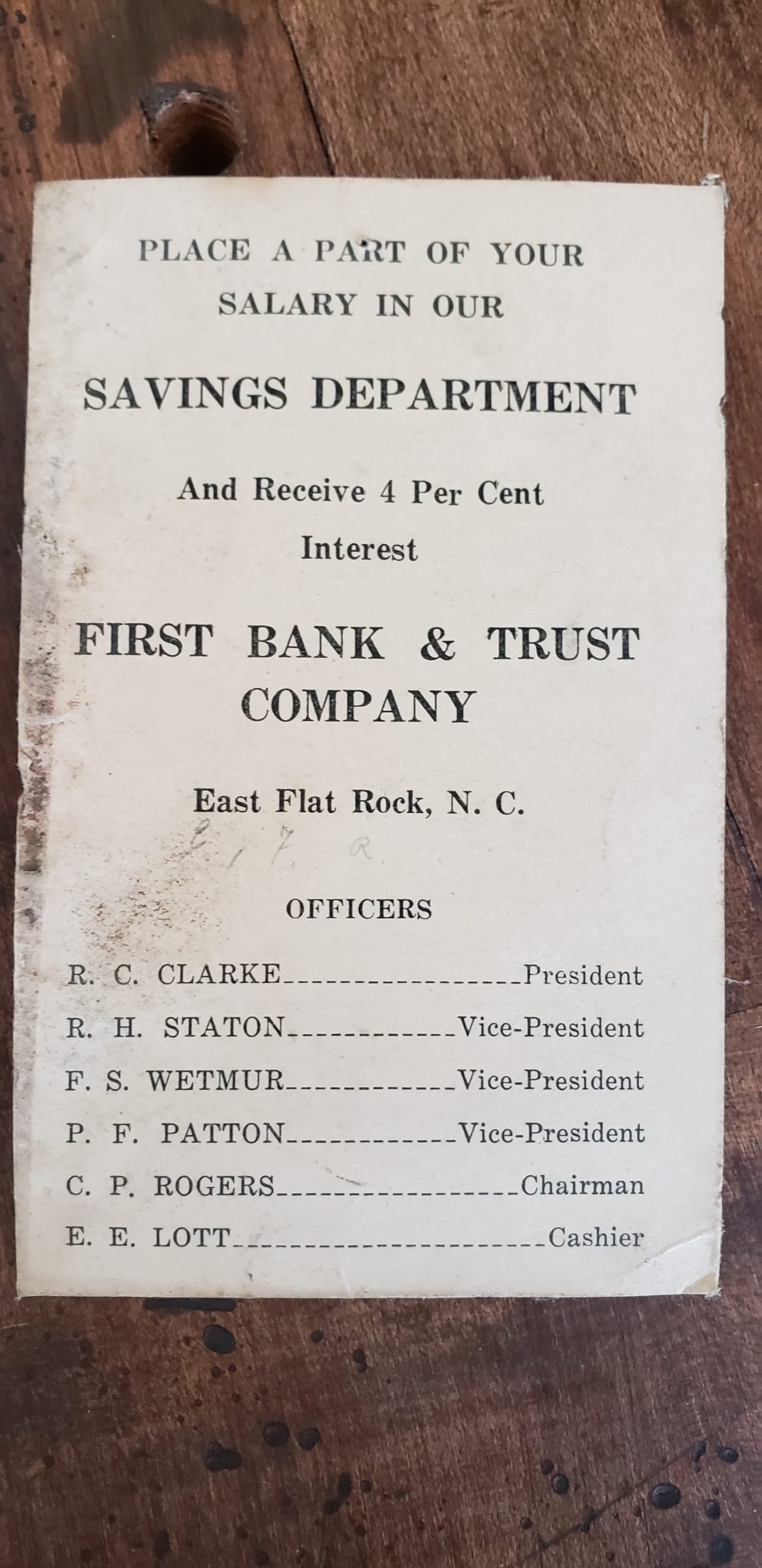East Flat Rock
/The following is excerpted from an article written by Jennie Giles and published on her website HendersonHeritage.com.
The community of East Flat Rock is east of the Flat Rock community; therefore, it was named East Flat Rock in the early 1900s. It is and was an area of bogs and wetlands, with numerous small creeks flowing into Bat Fork Creek. Bat Fork Creek then flows into Mud Creek. East Flat Rock was one of the earliest towns in the county.
The community was sparsely settled prior to the late 1800s and early 1900s. Until machinery was invented and purchased that could drain the bogs, making much of the area suitable for farming, early settlers found farming in the area difficult. In the first 100 or so years of county settlement, the community was considered a part of Flat Rock and the Upward community.
Early settlers
Most of the early settlers arriving in the 1780s into the mid-to-late 1800s settled around the bog, not within the bog itself. Abraham Kuykendall, in 1791, purchased 900 acres along Mud Creek. Some of this land included areas along today’s Bat Fork Creek, “Batwoods Creek.” In 1794, David Miller, Andrew Miller, James Greenlee and Abraham Kuykendall purchased land near today’s Butt Mountain and east to the Green River. This would have included land in the mountain bog.
Early settler William Capps purchased land in the area of today’s Zirconia that most likely included land in or near the mountain bog. His descendants married into the Fortune and Kuykendall families, and these families moved into the eastern and southern sections of today’s East Flat Rock. This was the area near Fortune Creek and Oak Grove Road. Early members of the Anders family and their descendants also moved to this same area.
Prior to the Civil War, John Justus Jr. and his descendants settled land east of the bog and into sections of the bog within East Flat Rock near its border with Upward. By the 1830s and 1840s, much of the area north of today’s railroad track was purchased by Judge Mitchell King of Flat Rock and former owners of the Brookland Estate.
In 1882 Theodore G. Barker moved to Henderson County and bought the Brookland estate. He drained the swamps in the area (Barker swamps) in the late 1800s and early 1900s. Much of the land in the northern section of today’s community was used as farmland, as Barker had the largest farm in the county at this time and was the largest land owner. He also began building one of the first “subdivisions” in the county, later known as Brooklyn Manor and Barker Heights.
Train Depot in East Flat Rock
Railroad, Roads, Post Office, Fire Department
The summer residents of Flat Rock wanted a train depot closer to their summer homes than the depot in Hendersonville. In 1889 the Flat Rock depot was built in today’s community of East Flat Rock. The railroad tracks passed through East Flat Rock from Zirconia to Hendersonville. John Brookshire was the first depot agent. The depot was torn down in 1958.
The East Flat Rock Post Office opened in 1908 across from the train depot and alongside the railroad tracks. The first postmaster was Richard J. Pace, who at the time was a teacher at a small school in East Flat Rock. Other postmasters included Perry Walker, James Weed Edney, John E. Creech, Evans Lamar Hamilton, and James Dale Scroggs.
The majority of East Flat Rock is still served by the East Flat Rock Post Office. There are a few sections of East Flat Rock served by a rural route out of the Flat Rock Post Office.
In the 1920s and 1930s, a new road was built to connect Hendersonville to Tryon, along with a “High Bridge” across the Green River. This was the Old Spartanburg Road. The new road and bridge were completed by the early 1930s. The Howard Gap Road, the main road to Spartanburg, S.C., prior to the building of this road was seldom used from this point and the bridge that crossed the Green River from the Howard Gap Road (old Peter Guice Bridge) was later torn down.
In the early 1940s, the route from Hendersonville to East Flat Rock changed when an overpass was built across the railroad tracks near Hendersonville. This is where U.S. 176 (Spartanburg Highway) is now located from Hendersonville to East Flat Rock.
The Blue Ridge Fire Department was formed in 1958 to serve the residents of East Flat Rock. This was the third fire department organized in Henderson County. The main fire station is located on Old Spartanburg Road.
A Town
Perry H. Walker began development of a town around the mill and the train depot in the early 1900s. Eventually, he purchased about 300 acres and sold the land to local residents who moved from outlying areas into the new community.
In 1914, the community had a textile mill, a school, a lumber plant, six stores, a post office, a restaurant, a barbershop, a meat market, cannery, churches, three boarding houses and a bicycle shop, with a population of about 600 residents. By the 1920s, there was a bank, a drug store, and three restaurants.
The community was one of the first areas in the county to have electricity with the building of the textile mill in 1907.
Stepp and Walker Building
In 1926, East Flat Rock was incorporated as a town. At the time it was the second incorporated town in Henderson County, after Hendersonville. Historically it was the third, after Saluda. But Saluda was annexed to Polk County in 1903. Carroll Pickens Rogers was the first mayor.
The new city paved the streets and brought in water lines.
Then the Depression hit, and it took more than 20 years of taxation for residents to pay off the indebtedness for the water lines and paved roads.
In 1950, most of the residents worked in the textile mill or had farms. The indebtedness was paid and they no longer wanted to pay the municipal taxes. Residents voted to dissolve the incorporation.
Location of Hill’s General Store
Remnants of the town still stand. The Stepp & Walker Store was built in 1898 and later housed the Mother Earth News. It currently stands abandoned. The stone building that housed the First Bank and Trust, built in 1923, still stands. The Hill’s General Store building, operated by Charles F. Hill for more than 50 years, was built in 1925 and still stands. Many of these buildings, including the school, were built by the Jones and Justus Builders Co., whose families lived in the community.
The First Bank and Trust building in East Flat Rock
The home built in 1906 by Perry H. Walker next to the Stepp & Walker Store still stands, as does the Silas Jones house built in 1905, the Hix Jones house built in 1907, and several others.
Industries
There was an early mill in the area known as Hart Manufacturing. Deeds indicate that it was located near the railroad, opposite the depot.
Perry H. Walker began buying land throughout what is today East Flat Rock in the late 1890s. Land was purchased from the Valentine family, Hart Manufacturing, Highland Lake Co., and many individuals (King, Hart, Patterson, Bennison, Arledge, Hall, Beddingfield, Corn, Mills, Fortune and more).
In 1905, Walker talked Frank and Herbert Wilcox of Lynn into investing money to build a textile mill in the community. They purchased between 30 and 40 acres of land on the east side of the railroad. The Skyland Hosiery Company opened in 1907 with a mill and 25 houses for workers, creating a mill town. This was the first textile mill in Henderson County. Later, in the same year, the Green River textile mill opened in the Tuxedo community.
The area where the textile mill in East Flat Rock was located, with the surrounding houses, became known as the “Mill Hill.” More and more people began moving into the community to work in the new textile mill. Shortly after 1910, Carroll Pickens Rogers headed the textile mill. In 1925 the mill was known as the Chipman-Burroughs Co. and was owned by F.L. Chipman and V.C. Burrowes. Later the name of the mill was changed to Chipman-Lacrosse Hosiery Mill. The mill closed in December 1968.
Albert Moreno purchased the property and Minuteman Anchors was built at the site. Today, in addition to Minuteman Anchors, Cason Oil Co. and Builders Supply, and Louis Williams & Son are located at the site of the first textile mill in Henderson County.
In 1912, industrial baseball leagues formed at the East Flat Rock and Tuxedo mills. They played games throughout the region and later other industries joined the league. Industrial league baseball was extremely popular in the county through the 1950s.
In 1954 General Electric announced plans to open a plant in East Flat Rock. Groundbreaking for the plant was in 1955. This plant was the county’s largest employer throughout most of the latter half of the 20th century. In 1989, Federal Paper Board Co. moved to East Flat Rock on Tabor Road across from General Electric.
Schools
Location of East Flat Rock High School 1923-34
There are early references to a one-room school in the community as early as 1887 and 1888. According to the late educator Ernest Justus, a school was located between today’s Flat Rock and East Flat Rock on West Blue Ridge Road. Justus described the school as a “weatherboarded,” or clapboard, building. About 1901 this school was moved to the Flat Rock site.
In 1908 there was a one-room school near the textile mill for the first grade. The second grade was at a church. Third graders and up attended the school in Flat Rock. In 1914, a two-room building, with later additions, served grades one through three, with fourth grade and up attending Flat Rock. It was in 1915 that a four-room building was built and students from the first grade through high school attended school in this building, with some classes held in store buildings and churches. In 1919, the principal was Sarah Caldwell, and teachers were Misses Deborah Stepp, Nellie Hart and Edith Hart. Nellie and Edith Hart, sisters, were teachers in East Flat Rock through the 1940s, with Miss Edith Hart teaching into the 1950s. The two sisters lived in an apartment above the Stepp & Walker Store in East Flat Rock.
In 1923, a new school was built in East Flat Rock on East Blue Ridge Road and the Old Spartanburg Road (today’s U.S. 176). This school served grades one through high school. Early principals included Bessie Steedman, Margaret Rozier, Frank FitzSimons and Ralph Jones.
Rosenwald School
East Flat Rock was the home of the only Rosenwald School in Henderson County. A Rosenwald School was the name informally applied to more than 5,000 schools, shops, and teachers’ homes in the United States which were built primarily for the education of African-Americans in the early 20th century. Julius Rosenwald, an American clothier who became part-owner and president of Sears, Roebuck and Company, founded the Rosenwald Fund. He contributed seed money for many of the schools. He required communities to commit public funds to the schools, as well as to contribute additional cash donations. The school in East Flat Rock was built between 1922 and 1923 on Mine Gap Road to serve the black students in the East Flat Rock community.
In fall 1934 the high school students began attending Flat Rock High School. The school was then an elementary school serving grades one through eight until 1960. In 1960, East Henderson High School opened in the East Flat Rock community. Students in the seventh and eighth grades then attended Flat Rock Junior High School at the site of the former Flat Rock High School. Today, middle school students attend Flat Rock Middle School at the border of the communities of Flat Rock and East Flat Rock.
In the mid-to-late 1960s, another elementary school was built in the community, Hillandale Elementary School. In 1993, the East Flat Rock School closed and was declared surplus by the school system. The building fell into disrepair. The first successful effort to preserve the school came when Henderson County Parks and Recreation used the former ball fields to form East Flat Rock Park. Four additional acres of the grounds of the school are owned by the Henderson County Parks and Recreation.
In 1996, the building was placed on the list of Preservation North Carolina. Historic schools are often at the heart of a community, said officials with Preservation North Carolina. Schools house memories for hundreds if not thousands of former students. In 2000, Preservation of North Carolina joined residents in persuading two Raleigh companies, Integra Development and WAJ Management to form a partnership, Parkside Commons Limited Partnership, to put senior apartments in the building. The partnership bought and historically renovated the building and turned it into 25 apartments.
Lucy King of East Flat Rock received a Gertrude S. Carraway Award of Merit from Preservation North Carolina for her efforts to preserve the historic school. The school is listed on the National Register of Historic Places. “I don’t think it is ever productive or progressive to tear down, throw away and waste,” King said. “It may take a lot of thought and hard work to preserve something, but it’s worth it.”
About the Author
Jennifer “Jennie” Jones Giles is a descendant of at least 30 of the earliest pioneer settlers in Henderson and Polk counties and has spent more than 30 years studying area history and genealogy. She grew up in Henderson County and was a 1969 graduate of East Henderson High School. She attended Wake Forest University and UNC-Chapel Hill, and holds a BA in sociology from UNC-Asheville, with minors in history, anthropology and education.
She has written extensively about the history of the mountain people from the Blue Ridge Mountains of Henderson and surrounding counties in North Carolina. Her work is published online at HendersonHeritage.com.
Jennie was the first director of the Henderson County Heritage Museum and conceived, researched and directed the opening exhibit “Let Freedom Ring.” She has conducted extensive genealogy research on her pioneer families in Henderson and Polk counties – Jones, Hill, Arledge, Clark, Cagle, Rhodes, Jackson, Edney, Justus, Pace, Justice and more. She currently teaches a continuing education class at Blue Ridge Community College on the history and heritage of Henderson County. See more information about her course offerings here. New classes will begin in mid-January.
The Rosenwald school in East Flat Rock was completed in 1923 and closed in 1951.
https://www.boldlife.com/can-rosenwald-schools-teach-us/
Bunched arrowhead. Photo by Gary Peeples, USFWS.
https://www.fws.gov/southeast/wildlife/plants/bunched-arrowhead/
Bog Turtle
https://www.fws.gov/southeast/articles/a-unique-mountain-refuge-protects-endangered-wetlands-and-the-wildlife-within/




















